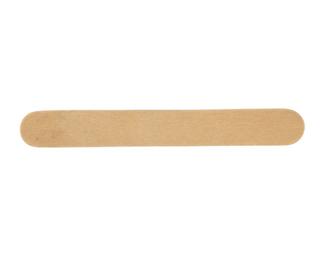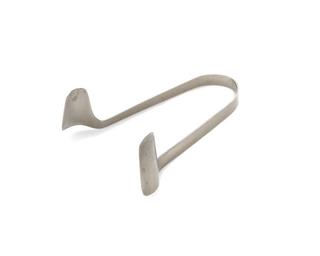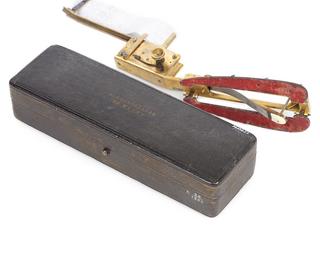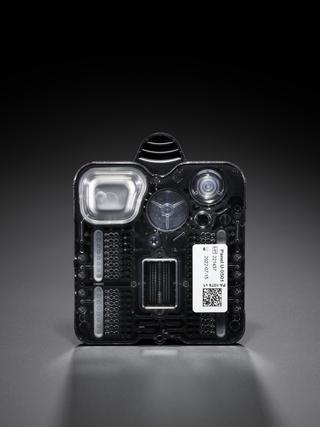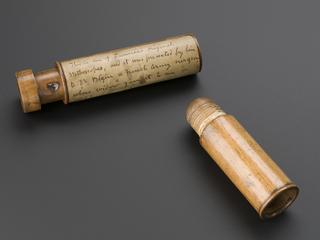
Sibson type combined percussor and pleximeter, United Kingdom, 1855-1865
- Made:
- 1855-1865 in United Kingdom



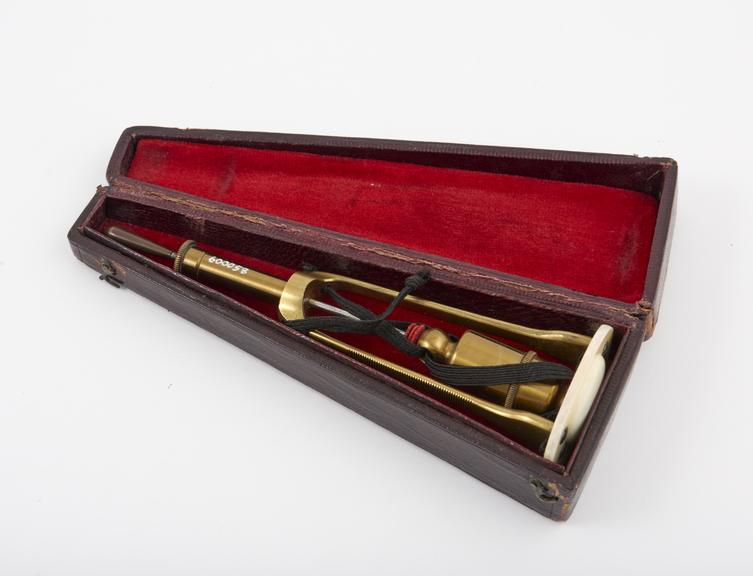

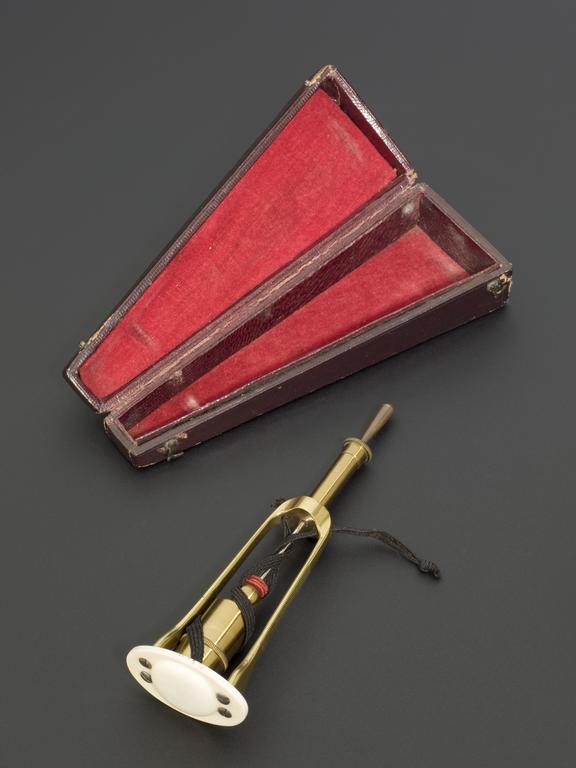
Combined percussor and pleximeter, in case, Sibson type
Leopold Auenbrugger (1722-1809) discovered the diagnostic value of percussion in Vienna in 1781. He tapped the chest or another body part and listened to the resonant quality of the sounds. When a healthy patient’s chest is tapped it produces a hollow sound. Fluid congestion or certain diseases alter the sound to a dull, flat thud. This is an example of a combined pleximeter and percussor. It was developed by Francis Sibson (1814-1876) in the 1850s. The ivory pleximeter was held on the skin. It was tapped with the hammer-like rubber-tipped percussor suspended within the instrument. The belief was this gave clearer sounds than using the fingers.
Details
- Category:
- Clinical Diagnosis
- Collection:
- Sir Henry Wellcome's Museum Collection
- Object Number:
- A600058
- Materials:
- ivory, wood (unidentified), brass (copper, zinc alloy), steel (metal), leather and complete
- Measurements:
-
overall - case closed: 39 mm x 150 mm x 52 mm, .116 kg
overall - case open: 33 mm x 154 mm x 105 mm, .116 kg
- type:
- percussor, pleximeter
- credit:
- Parkes Weber

